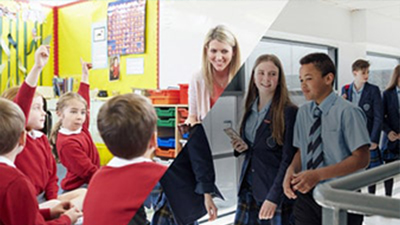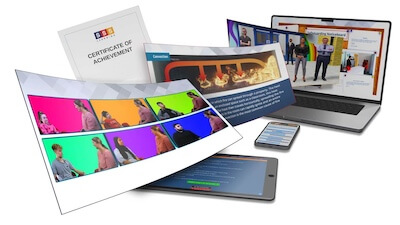Safeguarding Training levels

In short, there is no simple answer to this question. Across the UK, levels are defined differently and will vary depending on the sector worked or volunteer in.
Whilst the criteria may vary, broadly speaking each training level is matched to the level of responsibility and therefore the skills a practitioner needs to carry out their role to keep children safe. They also take into account whether a person will be working or volunteering in ‘regulated activity’. A role falls into the ‘regulated activity’ level when a person will be working in an unsupervised capacity.
So as a rough guide:
- Level 1 & 2 training
- May be suitable for those undertaking a fully supervised role. This means any work carried out is supervised by someone trained at a more advanced level who will supervise a person’s practice at all times.
- Level 3 training
- Should cover a broader training remit than levels 1 & 2 and prepare staff or volunteers for unsupervised working i.e. ‘regulated activity’.
- Level 4 training
- Should cover more in-depth, advanced safeguarding practice. The role of staff trained to this level will usually include management responsibilities and the supervision of safeguarding and child protection arrangements. For example a Designated Safeguarding Lead.
- Level 5 training
- Is usually undertaken by staff whose role may include formal investigative or high-level child protection procedures.
In England, the education sector has moved away from working to levels with educational settings following the training standards set out in the key statutory document Keeping children safe in education (KCSIE). Practice standards are also guided by the multi-agency guidance Working together to safeguard children.
Safeguarding Children Level 2 & 3 in Schools
Due to the nature of the work, most schools train their employees at a standard equivalent to level 3.
As volunteers work in a supervised capacity they may undertake a more condensed form of safeguarding and child protection training, equivalent to level 2.

Child Protection Training Pack
Online courses by SSS learning.
This safeguarding courses pack includes:
- Child Protection - Staff not in Regulated Activity - matches a standard equivalent to level 2
- Child Protection - Staff in Regulated Activity - matches a standard equivalent to level 3
Safeguarding Children Level 4 in Schools
Training equivalent to level 4 is reserved for:
- Governors/ Trustees
-
Who have the overall management responsibility for the organisation.
Safeguarding training for governors and trustees enable them to understand how to safeguard the setting their responsibilities for creating and ratifying robust safeguarding policies and procedures. These policies and procedures are designed to protect the organisation, it’s staff, volunteers and pupils. They should also have safeguards in place for visitors to the school and for educational visits.

Safeguarding for Governors and Trustees Training
An online course by SSS learning.
- Head Teachers / Principals and senior leaders
-
who have the day-to-day management responsibility for the organisation. They are responsible for ensuring policies and procedures are followed and adhered to.
- Designated Safeguarding Leads (DSLs)
-
who are responsible for overseeing all the organisation’s safeguarding procedures. This includes arrangements for those known to be or possibly at risk, ensuring protective factors are in place for children and young people at higher risk e.g. LAC, SEND. The DSL role also entails involvement in operational safeguarding arrangements e.g. filtering and monitoring arrangements.

Designated Safeguarding Lead Training
An online course by SSS learning.
- Designated Mental Health Leads (DMHLs)
-
who are responsible for leading on preventative and protective mental health arrangements across the setting. The DMHL
must also have a sound knowledge of safeguarding.

Designated Mental Health Lead Training
An online course by SSS learning.
In addition, knowledge of the thematic safeguarding topics is essential at an overview level of more in-depth level depending on bespoke role requirements. Topics include:
- Child-on-child sexual violence, abuse and harassment
- Child sexual exploitation
- County Lines
- Domestic Abuse
- Female Genital Mutilation (FGM)
- Forced Marriage
- Honour Based Abuse
- Prevent Duty
- Serious Violence & Knife Crime
- Misogyny & INCEL Subculture
Choosing the right training
Selecting your training provider may seem a daunting prospect but here are some tips to help guide the process:
- Take the time to fully explore the quality of the training course content. A good provider should give you access to try before you buy and be able to answer any queries you may have.
- Consider how accessible the content is to ensure it can meet the needs of all who will be accessing it. Accessible content should be visually engaging, support auditory learning, and provide supporting course notes together with other resources e.g. webinars, podcasts and INSET. A good training provider should not only provide individual training but the capacity for training to be undertaken in groups.
- Check how often courses are updated to reflect legislative and best practice guidance. A good provider should update their courses throughout the year as and when changes occur. Content should also support your Local Safeguarding Partnership (LSP) arrangements.
- Establish if they offer refresher training. This should build on and reinforce the key messages of core training.
- Check the training is accredited and provides an audit trail as evidence for governance and inspection.
- Identify what support the provider offers, i.e. how contactable they are and how flexible they are to bespoke training needs.
- Research what additional complementary services the provider offers, such as policy libraries and audit facilities.
- Be financially aware. Budgets are tight and what can seem like a great introductory offer may lead to inflated charges for additional services and renewals.
Securing a good safeguarding training solution is one, if not the most important thing a school can do. If you get safeguarding right, the core skills obtained forms the sound basis for pupil learning and provides a secure and informative environment for staff.

The Safeguarding Suite
The 1-stop safeguarding solution for your school / academy
The Suite is SSS Learning's solution for safeguarding children in education settings. It includes:
- All full & refresher courses mentioned above and many more
- Our library of safeguarding policies templates
- Document Tracker - tracking of staff reading key documents
- Access to the Safeguarding Auditor platform
- 365 days a year technical support, open until 10pm
- Specialist Safeguarding Support service
- Safeguarding Webinars
SSS Learning Safeguarding Director
16 October 2023